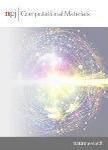版权所有:内蒙古大学图书馆 技术提供:维普资讯• 智图
内蒙古自治区呼和浩特市赛罕区大学西街235号 邮编: 010021

作者机构:Beijing Advanced Innovation Center for Materials Genome Engineering State Key Laboratory for Advanced Metals and Materials University of Science and Technology Beijing Beijing100083 China Institute of Applied Physics and Computational Mathematics Beijing100088 China Software Center for High Performance Numerical Simulation Chinese Academy of Engineering Physics Beijing100088 China Institute for Advanced Materials and Technology University of Science and Technology Beijing Beijing100083 China
出 版 物:《npj Computational Materials》 (npj Computational Mater.)
年 卷 期:2020年第6卷第1期
页 面:1-9页
核心收录:
基 金:国家自然科学基金 国家自然科学基金创新研究群体项目 国家教育部长江学者与创新团队发展计划 National Key Basic Research Program China the Fundamental Research Fund for the Central Universities support from the Projects of SKLAMM-USTB support from the Natural Science Foundation of Beijing, China
摘 要:Fe-based metallic glasses (MGs) have been extensively investigated due to their unique properties, especially the outstanding soft-magnetic properties. However, conventional design of soft-magnetic Fe-based MGs is heavily relied on trial and error experiments, and thus difficult to balance the saturation flux density (Bs) and thermal stability due to the strong interplay between the glass formation and magnetic interaction. Herein, we report an eXtreme Gradient Boosting (XGBoost) machine-learning (ML) model for developing advanced Fe-based MGs with a decent combination of Bs and thermal stability. While it is an attempt to apply ML for exploring soft-magnetic property and thermal stability, the developed XGBoost model based on the intrinsic elemental properties (i.e., atomic size and electronegativity) can well predict Bs and Tx (the onset crystallization temperature) with an accuracy of 93.0% and 94.3%, respectively. More importantly, we derived the key features that primarily dictate Bs and Tx of Fe-based MGs from the ML model, which enables the revelation of the physical origins underlying the high Bs and thermal stability. As a proof of concept, several Fe-based MGs with high Tx (800 K) and high Bs (1.4 T) were successfully developed in terms of the ML model. This work demonstrates that the XGBoost ML approach is interpretable and feasible in the extraction of decisive parameters for properties of Fe-based magnetic MGs, which might allow us to efficiently design high-performance glassy materials. © 2020, The Author(s).